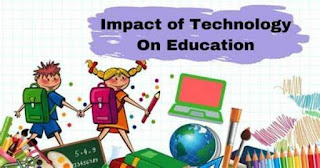The Impact of Technology on Education
Innovation has obviously changed the scene of instruction, reshaping conventional showing strategies and giving new open doors to the two teachers and students. This effect can be dissected from different perspectives, from the availability of data to customized opportunities for growth.
One critical perspective is the democratization of data. The web has made immense measures of information promptly accessible, separating geological hindrances and empowering understudies to get to instructive assets from essentially anyplace. Online stages and computerized libraries offer an abundance of data, engaging students to investigate different subjects past the imperatives of conventional reading material.
Besides, innovation has worked with a shift towards more intuitive and drawing in growth opportunities. Computer generated reality (VR) and expanded reality (AR) applications, for instance, give vivid conditions that improve understanding and maintenance of perplexing ideas. This takeoff from latent learning techniques cultivates understudy commitment and supports decisive reasoning.
Versatile learning advancements address another urgent turn of events. These frameworks influence computerized reasoning to tailor instructive substance in view of individual understudy progress, tending to explicit advancing necessities and pacing. This personalization obliges different learning styles as well as assists battling understudies with getting up to speed while provoking high level students to arrive at their maximum capacity.
In the domain of correspondence, innovation has upset the educator understudy relationship. Learning the executives frameworks, video conferencing apparatuses, and online discussions work with consistent correspondence, empowering teachers to give convenient input and backing. This network has demonstrated important, particularly during seasons of emergencies, like the worldwide pandemic, where remote learning turned into a need.
Nonetheless, it is fundamental to recognize the difficulties that go with the coordination of innovation in schooling. The computerized partition, alluding to the hole between those with admittance to present day innovation and those without, stays a huge concern. Overcoming this issue requires coordinated endeavors to guarantee that all understudies have equivalent chances to profit from innovative headways.
Also, there are worries about the potential for innovation to supplant specific parts of conventional instruction. While computerized instruments offer many benefits, a decent methodology that consolidates innovation with viable instructional method is urgent. The human component of instructing, including mentorship, direction, and social association, stays indispensable in the instructive cycle.
Security and protection issues additionally present difficulties. The assortment and capacity of delicate understudy information require strong shields to safeguard against unapproved access and abuse. Instructive foundations should focus on the turn of events and execution of severe information insurance measures to guarantee the security of the two understudies and teachers.
All in all, the effect of innovation on schooling is significant and diverse. From democratizing admittance to data to improving customized growth opportunities, innovation has reshaped the instructive scene. Be that as it may, it is critical to move toward this change insightfully, tending to difficulties like the advanced gap and keeping up with the fundamental human components of instruction. As innovation keeps on advancing, the instructive area should adjust and embrace advancements that really improve the growth opportunity for all.




Comments
Post a Comment